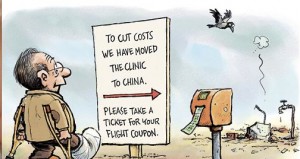New research shows what many have long suspected: women entrepreneurs are poised to lead the next wave of growth in global technology ventures. A report recently released by Illuminate Ventures, a San Francisco Bay Area venture capital firm, shows that women-led technology start-ups generate higher revenues per dollar of invested capital with lower failure rates than industry averages.
• Efficiency, efficiency, efficiency: The high-tech companies women build are more capital-efficient than the norm. The average venture-backed company run by a woman had annual revenues that were 12% higher than those run by men using an average of one-third less capital.
• Big Progress in Recent Times: More women are serving as officers of venture-backed companies with successful exits. In 1988, only 4% of the 134 firms that went public in the U.S. had women in top management positions growing to over 41% percent by 2004. Of 2009’s 19 high-tech IPOs, all but two had at least one woman officer.
• Fewer Failures: Despite often being capital-constrained, women-owned businesses are more likely to survive the transition from raw start-up to established company than the average.
• Expanded IP Contributions: From 1985 to 2005, the annual number of U.S. female-invented fractional software patents increased 45-fold—three times the average growth rate in that sector.
• Growing Influence in Start-ups: Women-owned or led firms are the fastest growing sector of new venture creation in the U.S., growing at five times the rate of all new firms between 1997 and 2006— now representing nearly 50% of all privately held businesses.
• Venture-level Returns: In the past 10 years more than 125 companies with over 200 women founders or officers have achieved IPOs or >$50M M&A exits in the U.S. high-tech sector alone.
• Diversity Improves Performance: Organizations that are the most inclusive of women in top management achieve 35% higher ROE and 34% better total return to shareholders versus their peers—and research shows gender diversity to be particularly valuable where innovation is key.
• Financial Bottleneck: In 2008 woman co-founded tech businesses gained less than 7% of venture investment in the high-tech sector and women owners of $1M+ businesses are still twice as likely to use debt versus equity capital as their male peers.
• Impact of Women Investors: Women now represent over 15% of angel investors and 5%–7% of partner-level high-tech venture capitalists in the U.S. Firms with at least 1 women investment partner are 70% more likely to lead investments in a woman entrepreneur than those with only males.
The bottom line: More than ever before, women are influencing the face of business. They are on the cusp of becoming a leading entrepreneurial force in technology. As the global economy regenerates, new business models are needed to stimulate economic and job growth. Investors seeking to reinvigorate bottom-line performance and to favorably impact the entrepreneurial strength of the U.S. economy would be wise to support strategies that enable high-tech start-ups that are inclusive of women entrepreneurs. High Performance Entrepreneurs











